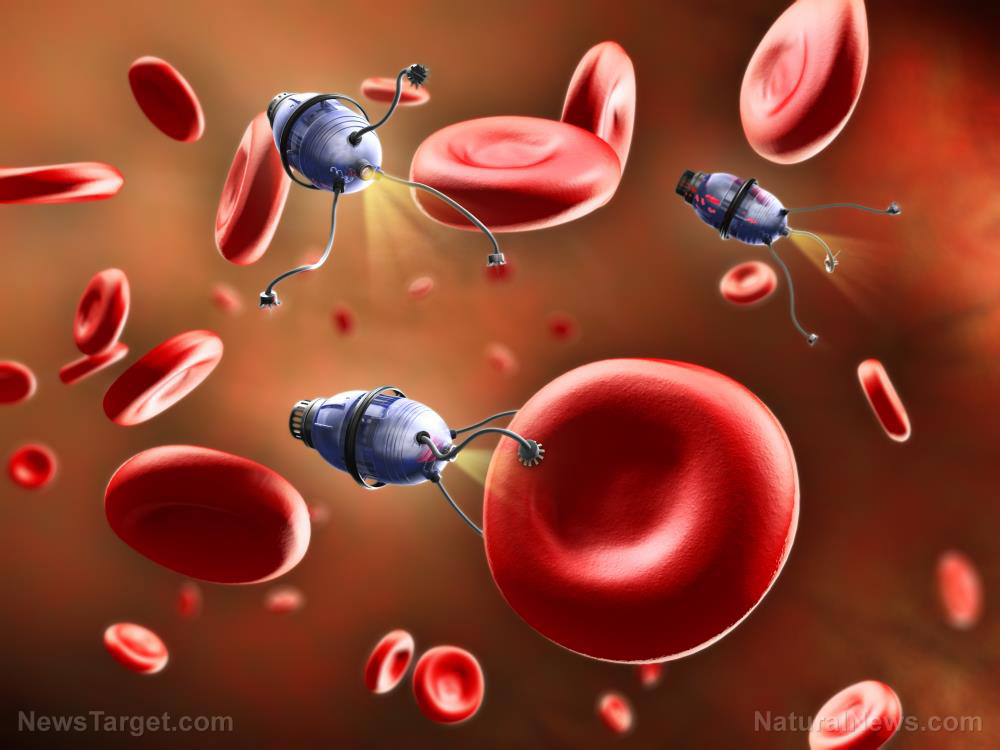A step closer to superhumans: Scientists claim that a nanoparticle injection in the eyes could give people night vision
07/28/2020 / By Franz Walker

Giving a person infrared night vision through an eye injection seems like a premise for a science fiction movie. A recent study, however, by researchers from the University of Massachusetts Medical School (UMMS), shows that this may be much closer to reality.
The term “night vision” is often associated with bulky goggles worn by soldiers to help them see in the dark. In their study, published in the journal Cell, the UMMS team demonstrated how specialized nanoparticles could give the naked eye the same ability as these goggles. (Related: Citizen scientists develop eye drops that enable night vision for 55 yards.)
Using rare-earth elements to grant night vision in mice
The eyes of humans and most mammals can only detect light between wavelengths of 400 to 700 nanometers. Devices that use thermal imaging like night-vision goggles work by detecting near-infrared radiation, which has wavelengths between 750 nanometers to 1.4 micrometers.
To do this, the researchers looked at a special nanomaterial called upconversion nanoparticles (UCNP). These contain the rare-earth elements erbium and ytterbium that can convert low-energy photons from near-infrared light into higher-energy green light that can be seen by mammalian eyes like ours.
The team then injected UNCPs into the eyes of the mouse models, where they bonded with the receptor cells in their retinas. Using in vivo electroretinograms and visually evoked potential recordings of the mice’s visual cortex, they found that both the retina and visual cortex of the mice were being activated by near-infrared light.
In addition, the team also conducted behavioral tests to confirm that the mice were able to see near-infrared light. They placed mice in a Y-shaped tank of water that included one branch with a platform for them to escape the water. Both branches had shaped lights, a triangle for the correct branch with the escape route, and a circle for the one without.
After training mice – those who had undergone the injections and a control group – to head towards the triangular light, the researchers replaced the visible light with near-infrared light. In these conditions, the mice with the UCNP injection could still identify the correct branch.
“The mice with the particle injection could see the triangle clearly and swim to it each time, but the mice without the injection could not see or tell the difference between the two shapes,” says study lead Dr. Gang Han.
The team also noted that the UCNPs persisted in the mice’s eyes for at least 10 weeks with no noticeable side effects. That said, the team still wants to conduct more tests before injecting these particles into human eyes.
From super dogs to infrared astronomy
When discussing the team’s next steps, Han said that the technology could be tested in service dogs.
“If we had a super dog that could see near-infrared light, we could project a pattern onto a lawbreaker’s’ body from a distance, and the dog could catch them without disturbing other people,” said Han.
Beyond creating “super dogs” with night-vision, the team’s goal is to eventually be able to use the nanoparticles – potentially using organic materials instead of rare earth elements – on humans. With this, Han sees uses for the technology beyond military applications, even positing that it could also be used in fields such as astronomy.
“When we look at the universe, we see only visible light,” said Gang Han, the project’s principal investigator. “But if we had near-infrared vision, we could see the universe in a whole new way. We might be able to do infrared astronomy with the naked eye, or have night vision without bulky equipment.”
Sources include:
Tagged Under: biotech, discoveries, eye, nanoparticles, nanotech, nanotechnology, near-infrared light, night vision, research, retina, science
RECENT NEWS & ARTICLES
COPYRIGHT © 2018 BREAKTHROUGH.NEWS
All content posted on this site is protected under Free Speech. Breakthrough.news is not responsible for content written by contributing authors. The information on this site is provided for educational and entertainment purposes only. It is not intended as a substitute for professional advice of any kind. Breakthrough.news assumes no responsibility for the use or misuse of this material. All trademarks, registered trademarks and service marks mentioned on this site are the property of their respective owners.




















